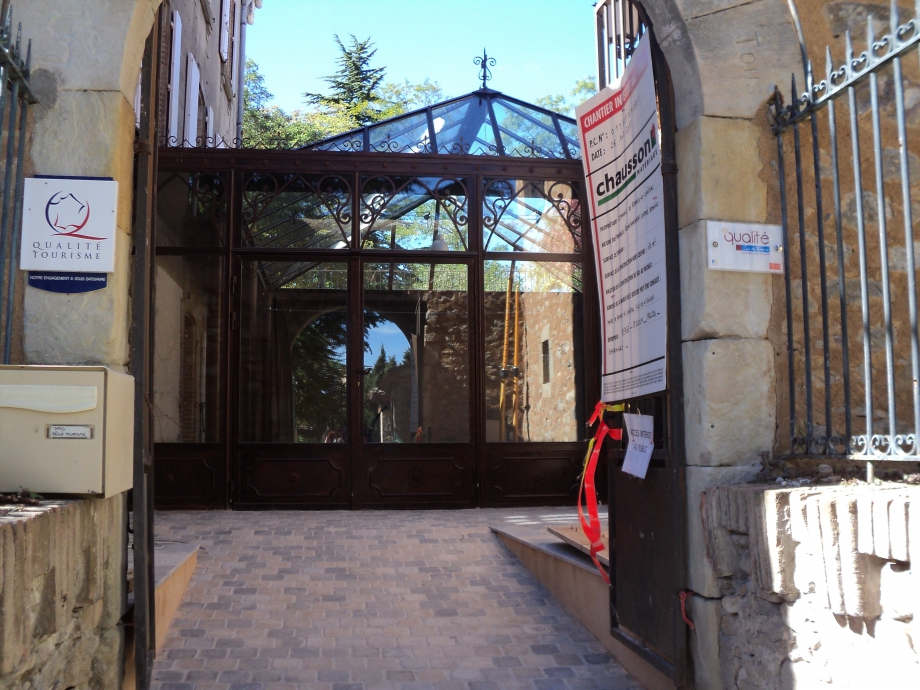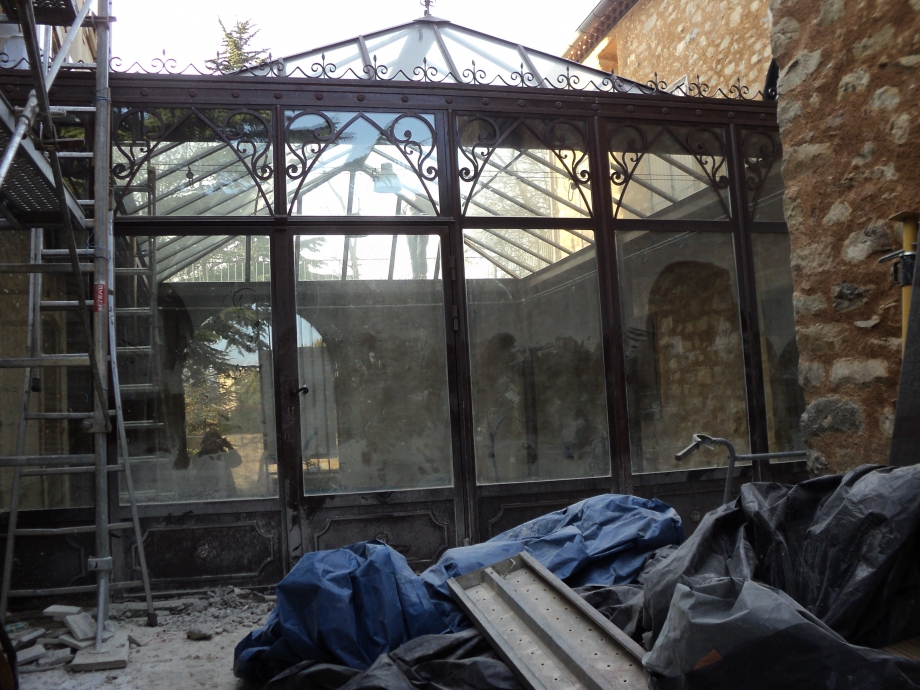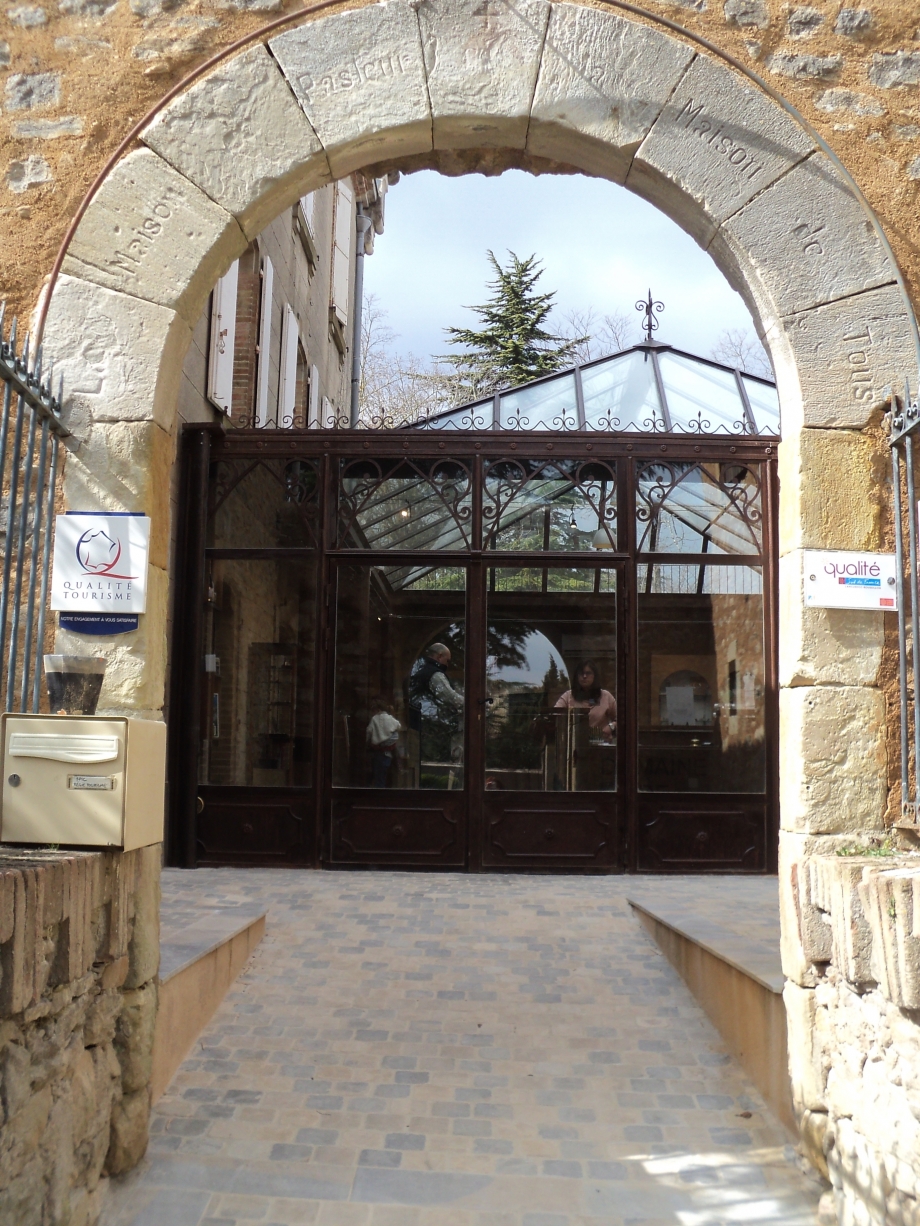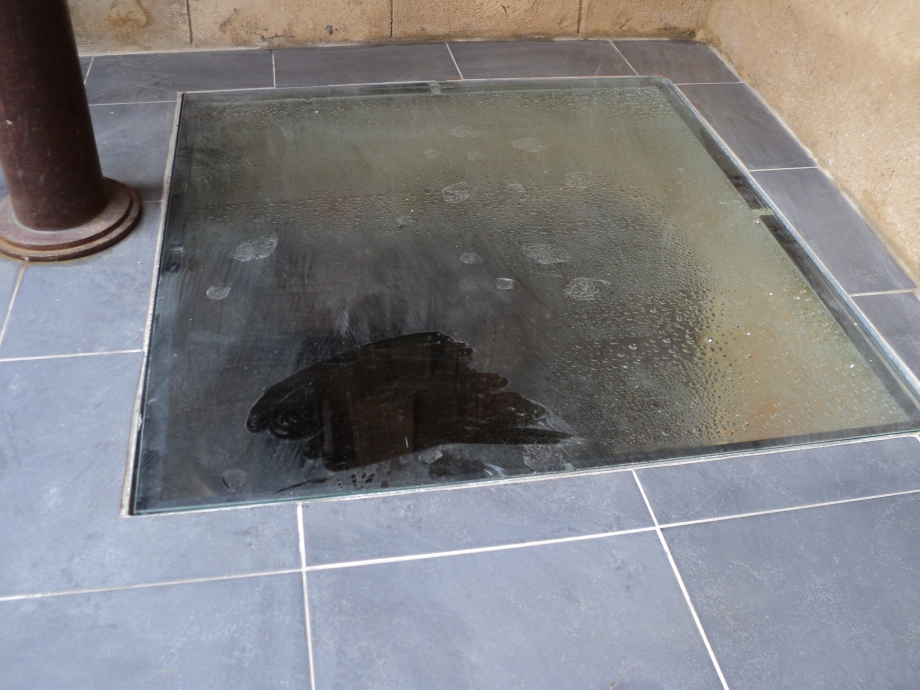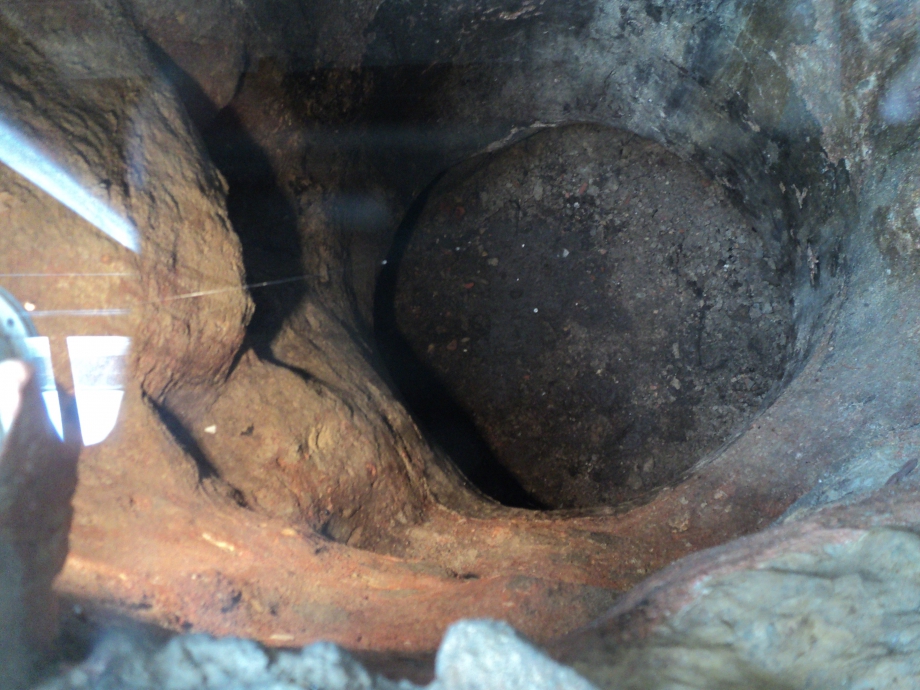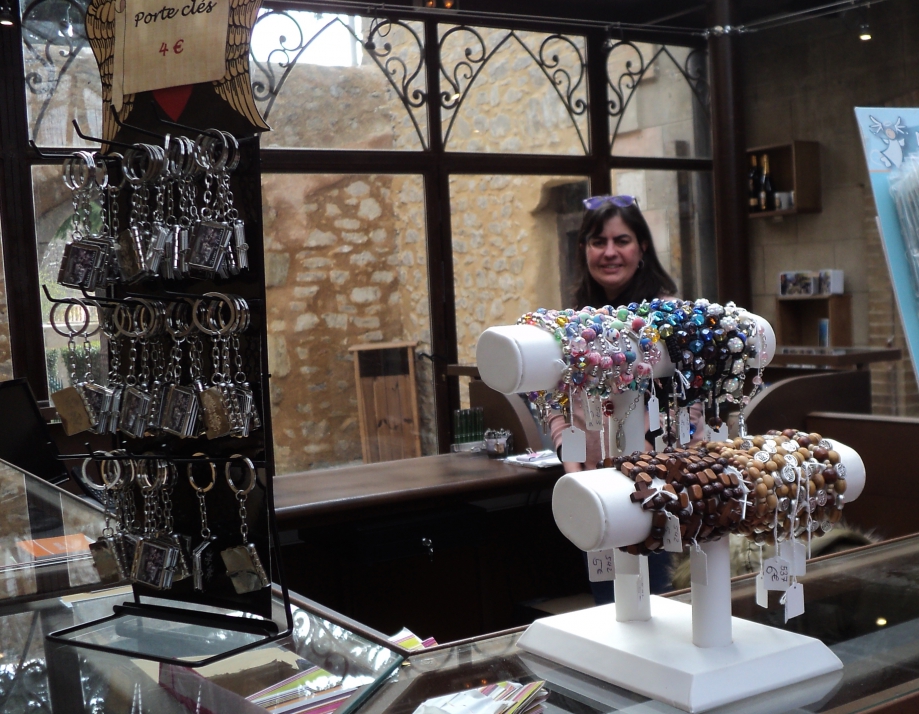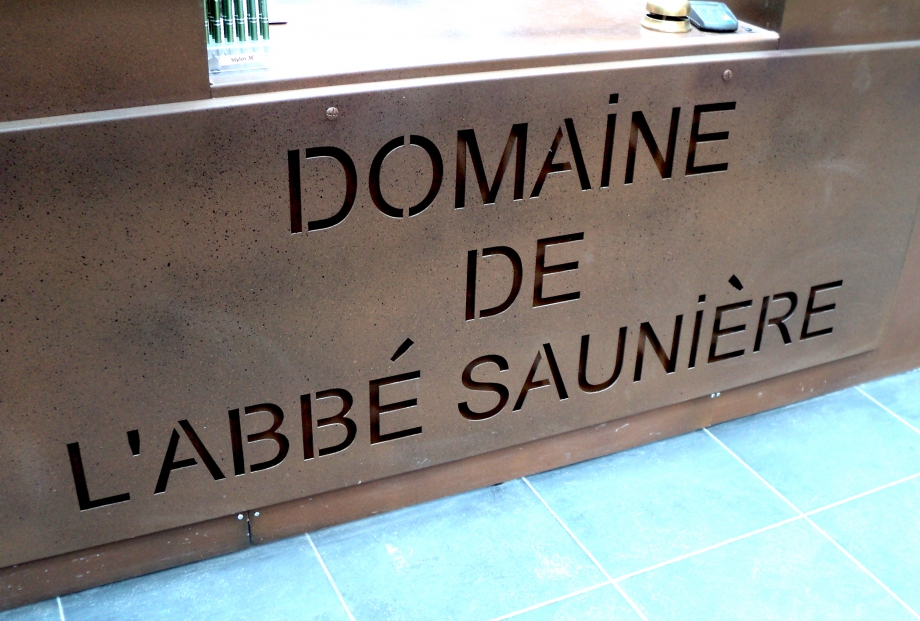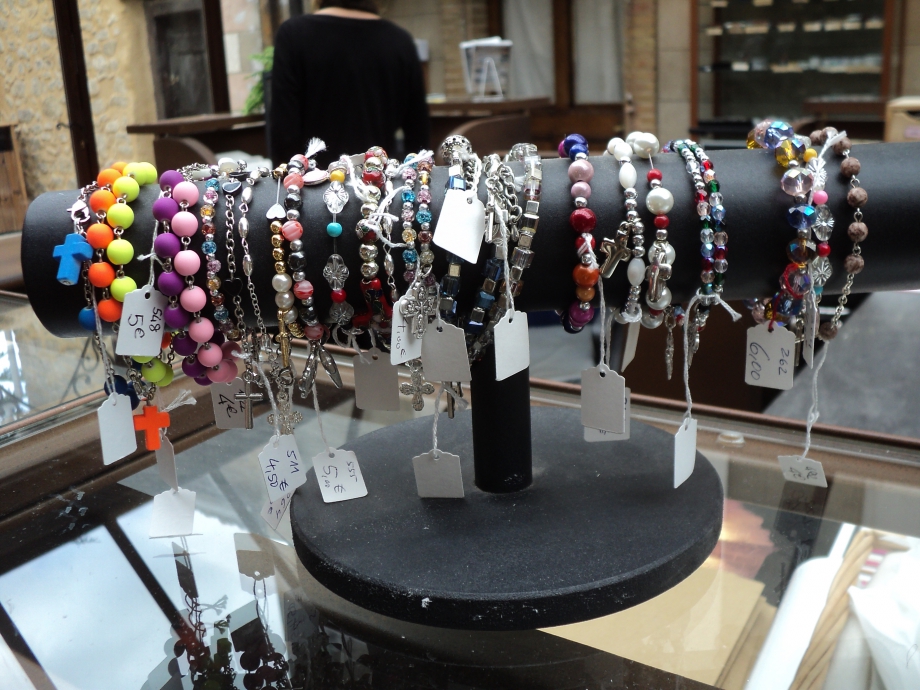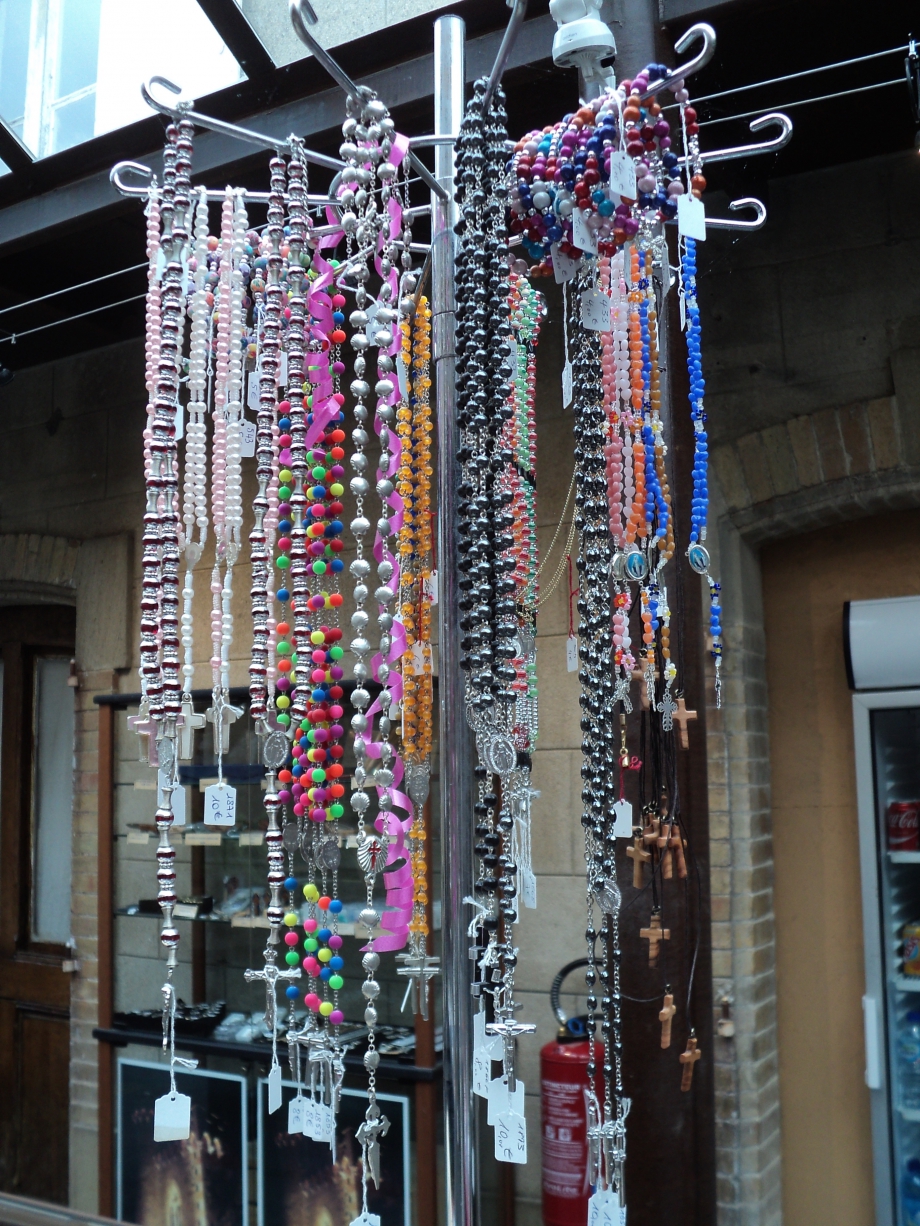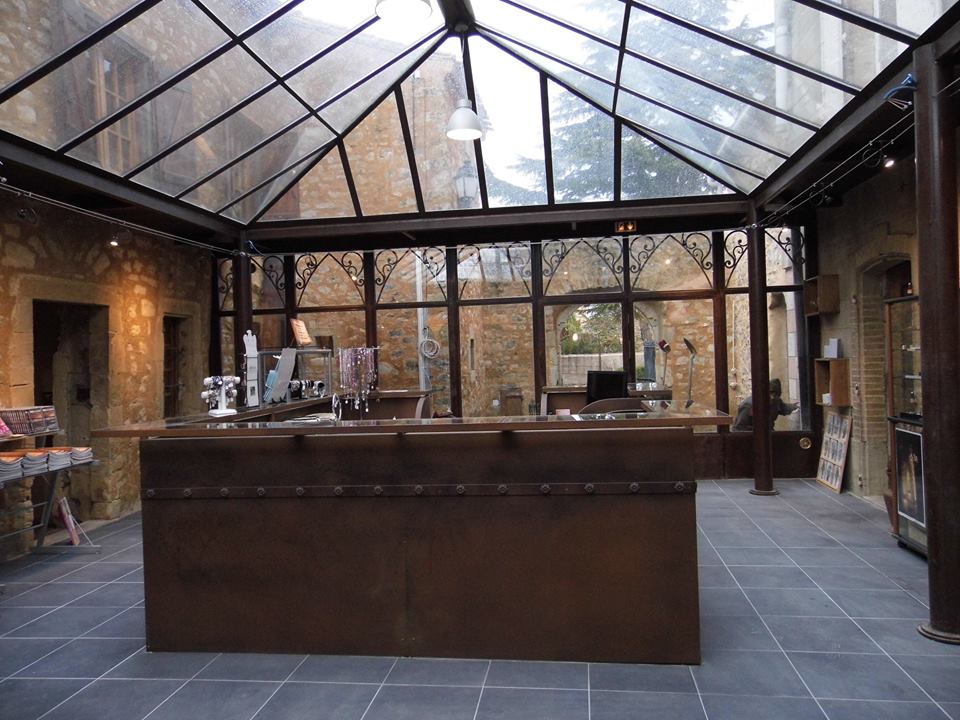Rennes-le-Château - La Domaine Shop
Controversy! Here's the ongoing tale of how it came into being . . .
A new Tourist Office has been built in Rennes-le-Château. It is the reception room for "the Domain" which is owned by the municipality; from there one has access to the Villa Bethania, the museum, and the park of Bérenger Saunière with its belvedere, glass house and Tour Magdala. The building lives in the very centre of everything that made the life of Bérenger Saunière.
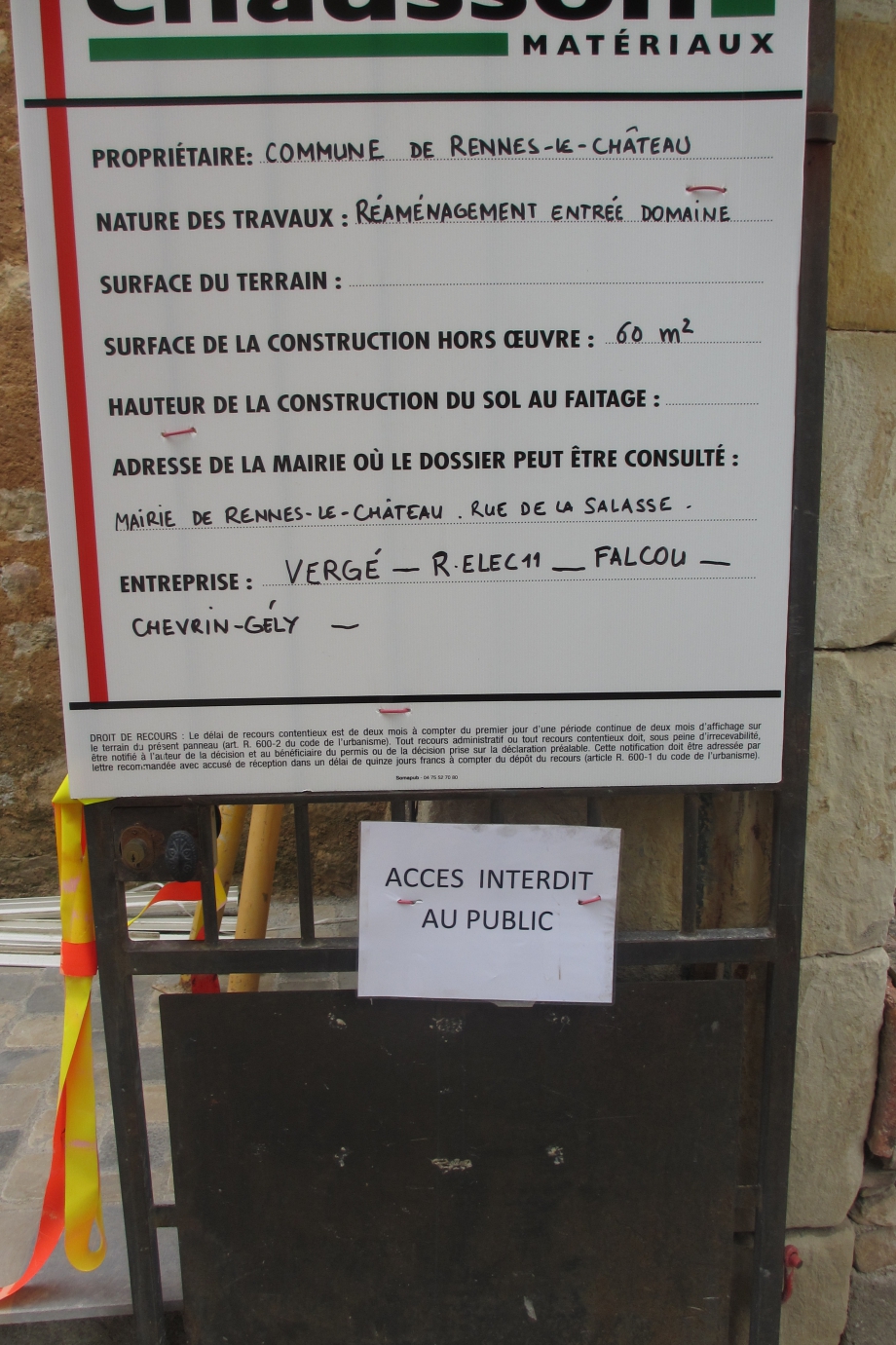
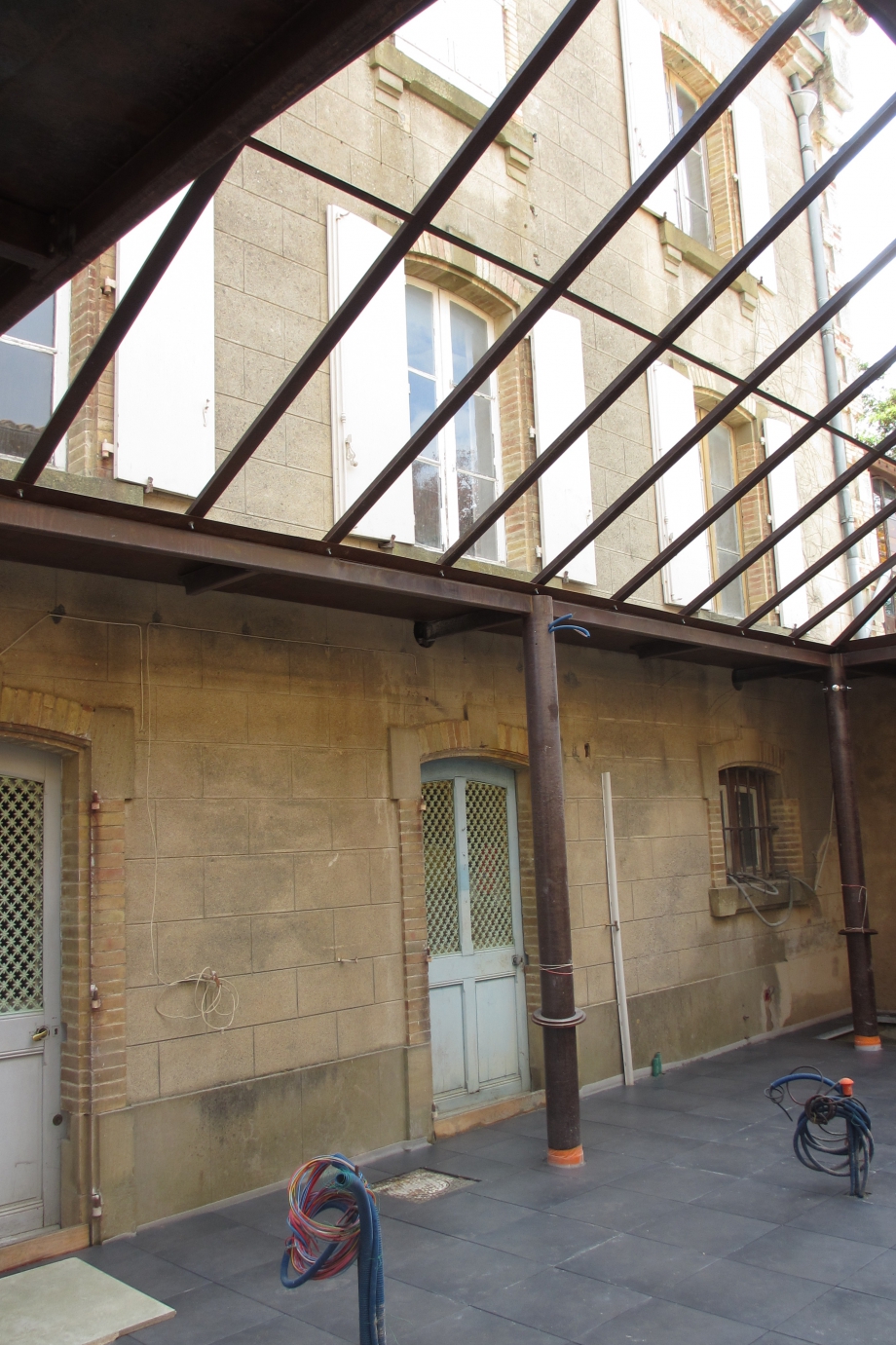
In the spring of 2015 notices went up, people were denied access to the courtyard and the museum, work had began on something the notice only called "rearrangements," and we nick-named it "the maire's construction." In principle of course, it was not his personally, for the Municipal Council had to approve, and had done so. What was this construction to be? Some said a shop, a bookshop no less, to rival the bookshops already in the village with the maire personally approving all books sold!
Last spring people started checking the planning consent of the building to find out, bizarrely, that it had not been fully approved. So even though the glazing had to be done, building had to halted until such time as the paperwork was correct; throughout the summer of 2015 in fact.
All was looking quite elegant even though it was just an empty shell at that time, and some people told me that although they disapproved of building there, in that spot, they did like the style, similar to that of the Eiffel tower, which was typical of Bérenger Saunière's day. Maybe they felt he would have approved? I can't say that I myself approved; the presbytère for example is dated 1727, and I'm not sure that fin-de siècle Paris is what we want beside 18th century Languedocian.
Early in 2016 building recommenced and on a January day someone was watching me take pictures of the chaos!
But eventually a grand opening day was announced for 12th March. I was there!
The Tourist Office is in the courtyard between the Villa Bethania on the left and the presbytère, which now houses the museum, on the right. This area was once all open and Bérenger Saunière had inscribed over the doorway; The house of the pastor is the house of everybody. This photo above was taken about three years ago.
This is no longer true, because you have to pay to go into the presbytère; it's 5€ for a ticket to include the museum, the gardens of the "domain," where is the grave of Bérenger Saunière moved from the cemetary, the belvedere where Bérenger's guests used to stroll, the Tour Magdala which was Saunière's library, the Villa Bethania where Marie Denarnaud and her family lived, and the little chapel beside the villa that Bérenger used to saw mass for his parishioners after his bishop tried to sack him.
The first thing I saw inside was a glass plate in the floor! Under it is a hole in the ground. A well? A hiding place for treasure? Just a fissure in the rock? There is no notice.
Can we call this "a-hole-in-the-corner affair"?
They have since told me it was just an old well. Was this used by the Denarnauds and the Saunière? It must have been, as it was situated in the courtyard between the Villa Bethania and the presbytère. (In the old Tourist office in the Villa Bethania there was also a hole with a glass panel above it, but that was a natural crevice/tunnel in the rock.)
A member of the municipal council had told me there was a great need of a larger Tourist Office because when American spiritual tours came, they couldn't all get in the previous smaller office. This new one was spacious, I must say, elegant and well-lit.
It took up nearly all the space in the courtyard. The wall on the left was the back wall of the villa Bethania and the wall on the right was the front of the presbytère. The Eiffel-Tower like girders making up the roof were fixed into these walls.
There were many books for sale and many gifts, including wine.
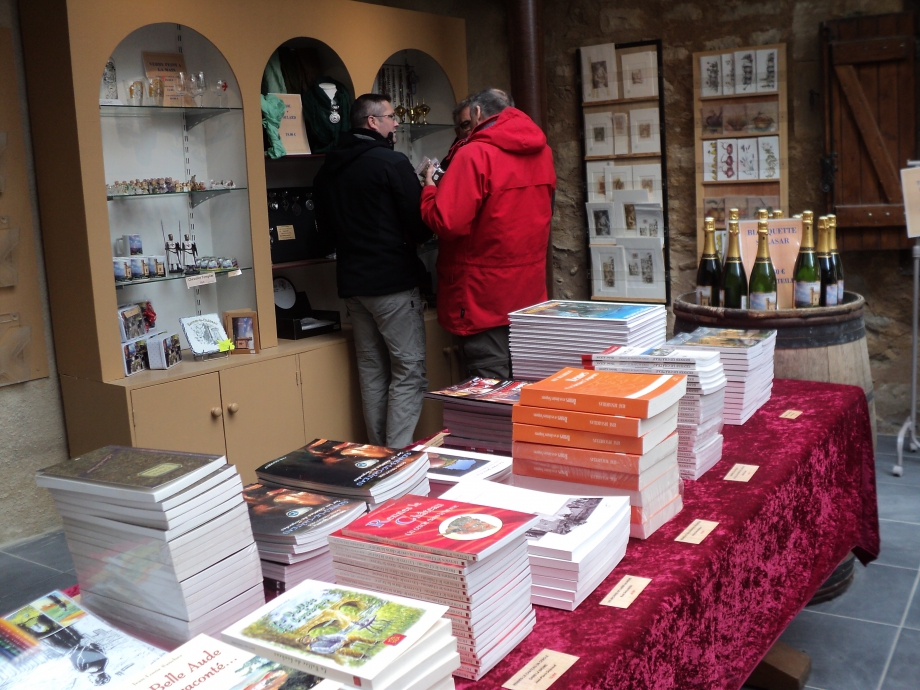
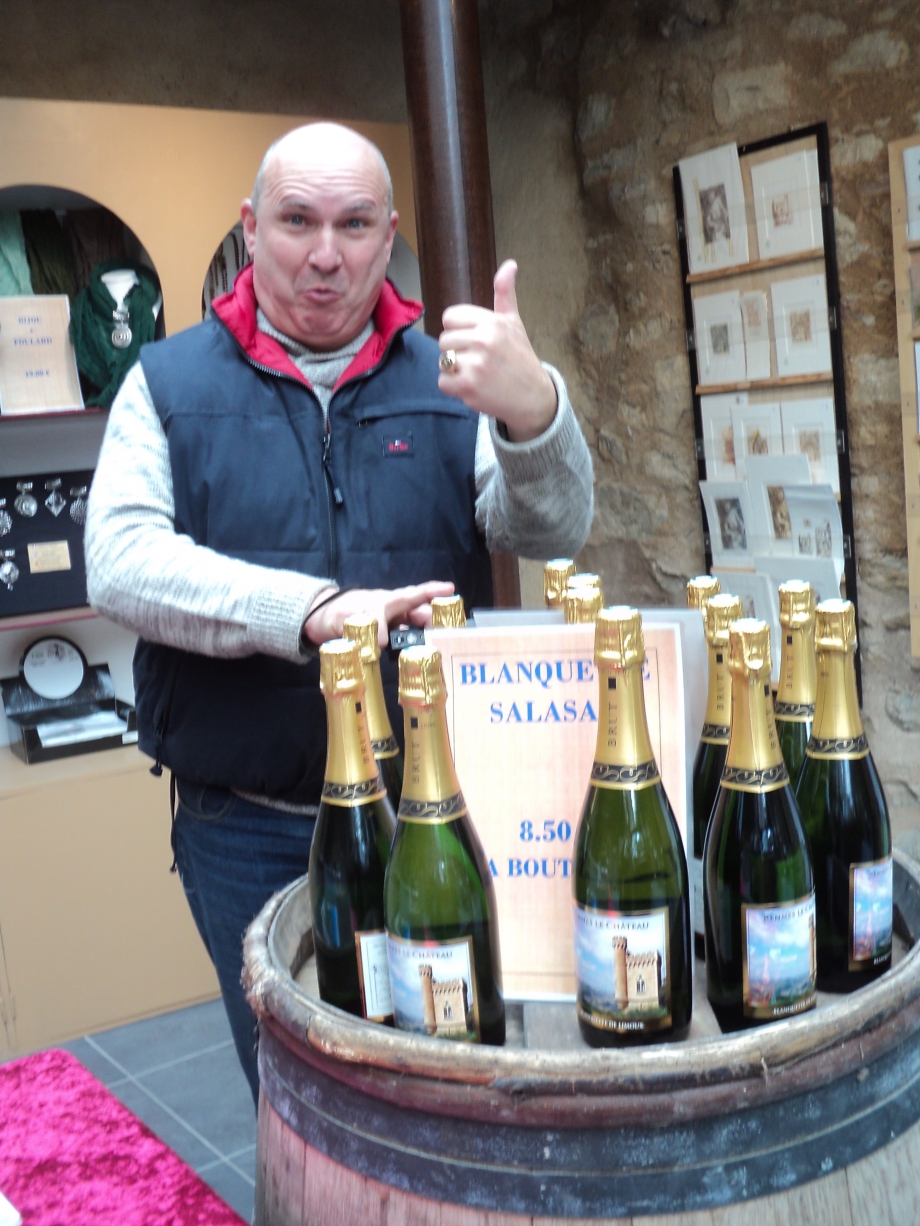
The large number of what I call "gee-gaws" such as bracelets and key-rings for sale was fun, and there were gifts promoting the region that you can buy for your friends. In fact, the "tourist office" is a shop and is known known as the Boutique of the Domain - la boutique du domain.
To the right of the main desk was the old door to the presbytère, while almost directly opposite it was the back door of the Villa Bethania. To me it is sacrilege they are selling coca-cola in that doorway.
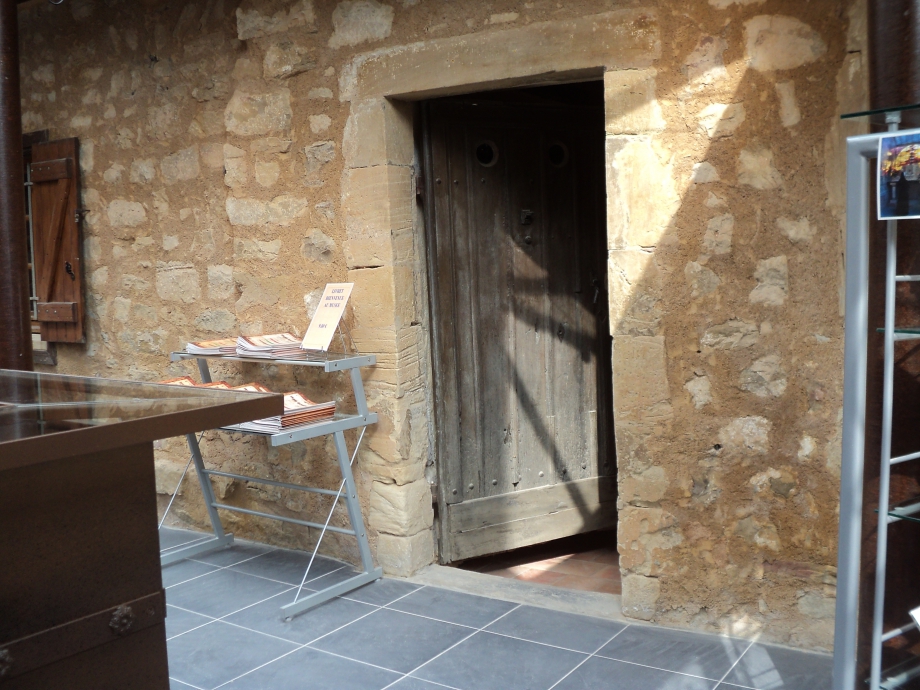
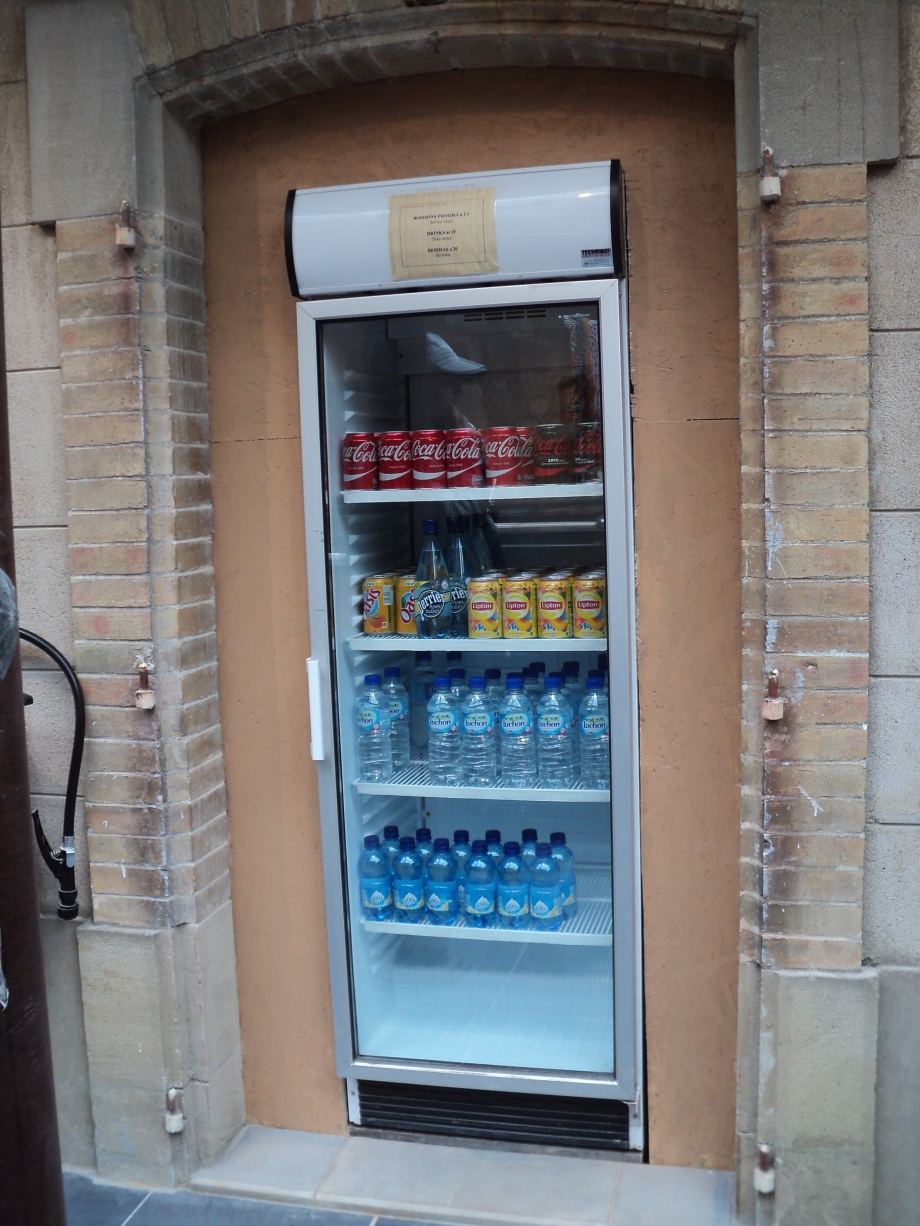
The presbytère was built in 1727 and Bérenger Saunière finished building the Villa Bethania in 1905. After that he lived in the presbytère and Marie Denarnaud and her family lived in the Villa. Bérenger's bedroom was in the presbytère on the ground floor, in the room on the right, and not upstairs as the museum implies. It was a short distance between the two buildings, with the two doors nearly opposite, and it seems very likely that Bérenger and Marie were lovers. The back door of the villa and the front door of the presbytère are and were opposite each other. Marie Denarnaud lived in the villa, Bérenger Sauniere lived in the presbytère. This Domain shop is built in the courtyard between the Villa Bethania and the presbytère.
Bérenger Saunière designed the domain - the presbytère was already there - and the lay-out of Villa Bethania, and the courtyard, and the gardens and the belvedere and the Tour Magdala, and the kitchen garden with a pool in Marie's garden, was all thought out by him. The design of his whole domain was done by him, on masonic principles, incidentally architecturally very well, so this does not seem to be accidental. I feel that the integrity of the positioning of the buildings in his domain has now been lost, all in closed in and views are blocked. One no longer senses the ghosts of the lovers crossing the courtyard at night . . . it's very romantic to think that he built the villa exactly where it was to remain close to Marie Denarnaud.
These pictures were taken from the museum.
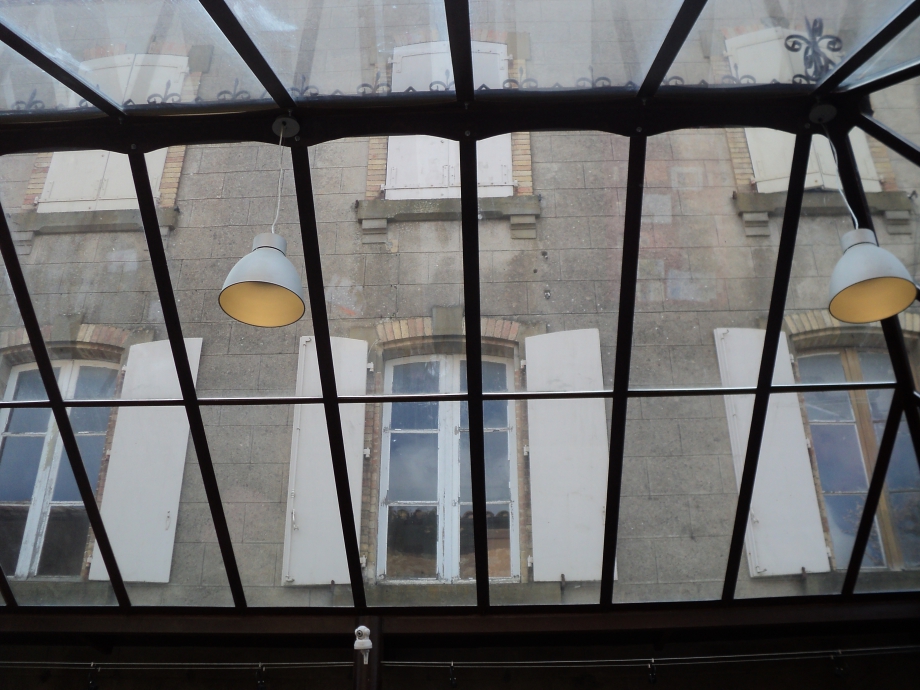
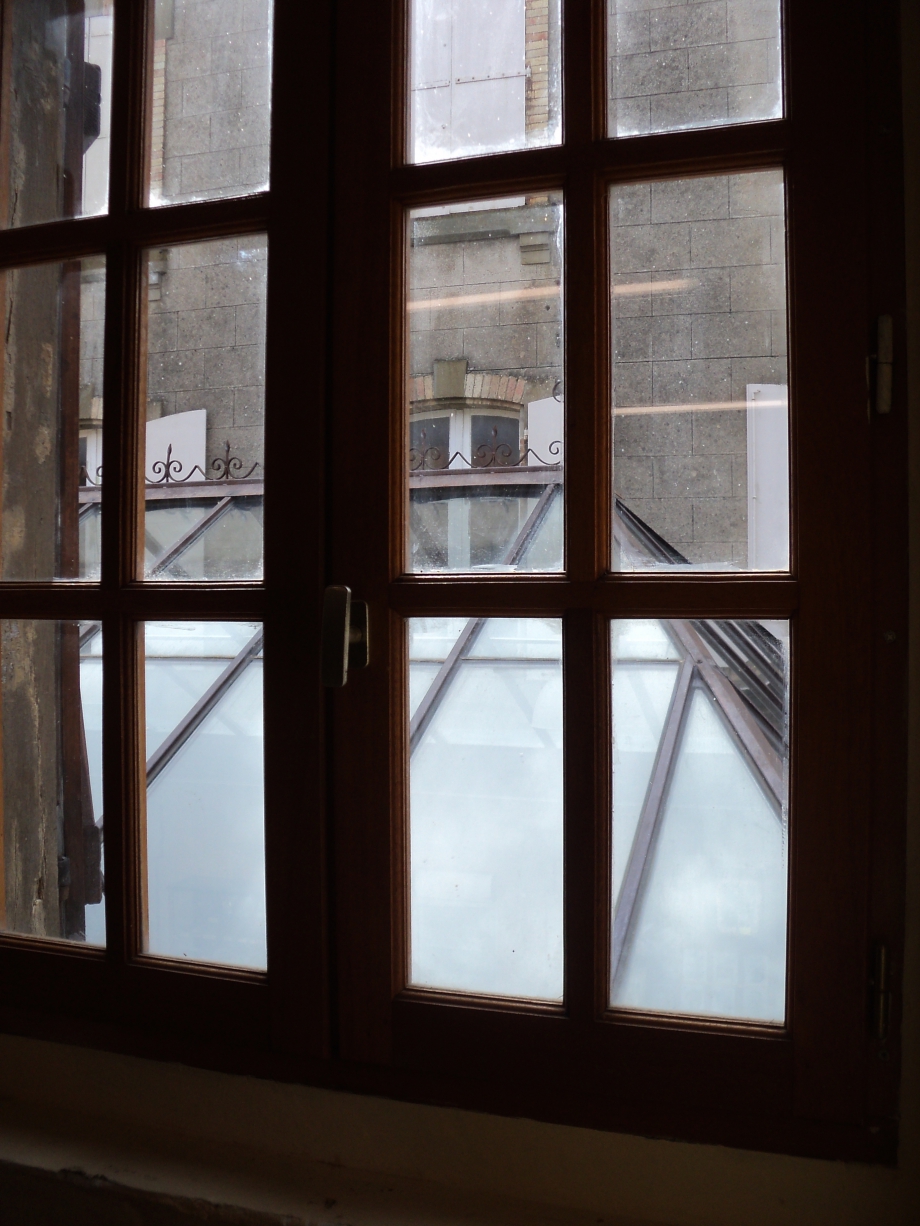
The New Tourist office/shop seems to fill up all the space. You cannot stand back and admire the Villa, you cannot stand back and see the presbytère in its entirety. The complete integrity, as architects would say, of Bérenger Saunière's design is lost.
I feel that I have sort of "lost touch" with the priest who found a fortune. I can't "sense" him so much. Even though I have photos dating back to 1990 visits, my mental images of him and of Marie Denarnaud are fading rapidly. I have such a sense of loss, a loss at the core of the "mystery." It is harder to understand how they lived, harder to perceive the very human story beneath today's commercialism and tourism. I see people buying their 5€ tickets and wondering about the Domain, sitting in the garden beside the 22 steps, not realising the significance of the masonic 22. I see them looking at the new grave of the priest, not knowing that he choose his original place in the cemetary for special reasons.
Some say that this removal of the grave began a trend in which short-sighted commercialism was all, and now it is too late to go back. There is even a story that the municipality wanted to re-open the original door of the church, which was closed up, and the porch built on the side of the church, when the presbytère was built. Then tourists would have to enter the Tourist Office and then pay to see inside the church. The Bishop of Carcassonne however, soon put a stop to that idea. The church, unlike the preacher's house, will remain open to all.
In spite of all this. I must add that it is a delightful building. Some of the things they sell are fun. They have air-conditioning, it is warm in winter, cool in summer, and a great place to meet friends. It is well-done and pleasant - but it should have been built somewhere else.

Laughter defuses all! Kris Darquis, Jean-Luke Gendron and Kristina Kahnlund.
I had never thought of Rennes-le-Château as a "tourist magnet" but as an adorable small village, thrumming with history ever since the Visigoths founded it around 314AD. It played a larger role in the history of the region than anyone imagines right up until the Spanish "bandit," Henri de Trastamare, razed the lower town to the ground and left only the citadel with its ruined château and ruined church.
But now the time has come to move into the 21st century and I'm not sure I like it!
And who knows what the future holds? Maybe someone is spying on me!
Visit next time you go to Rennes-le-Château. It's on the left as you approach the church.
Inscrivez-vous au blog
Soyez prévenu par email des prochaines mises à jour
Rejoignez les 97 autres membres

